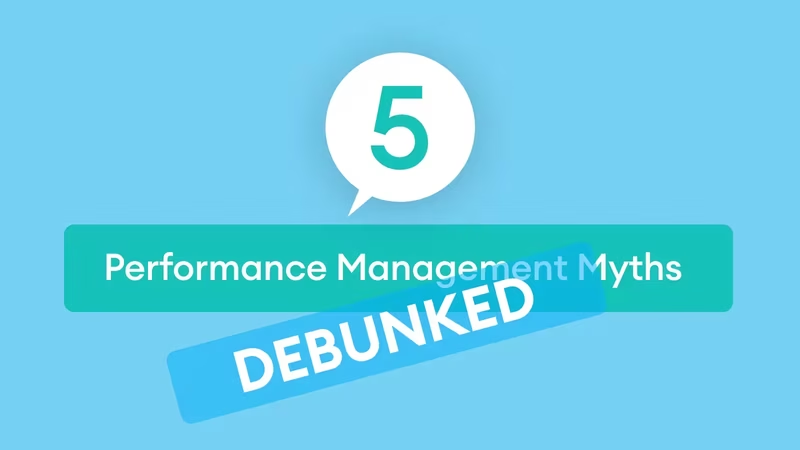A lesson learnt
Few performance management practices have had as lasting an impact on corporate history as Microsoft’s ill-fated experiment with “stack ranking.” This seemingly innocuous system, introduced by the tech giant, had far-reaching consequences, reshaping the dynamics of cooperation and collaboration within its workforce.
Imagine a scenario in which even a team of high-performing individuals could find themselves labeled as “average” or worse due to an enforced system where at least a certain percentage ‘Had’ to be chosen as poor performers. This was the reality under stack ranking. The demoralizing practice pitted colleagues against each other, stifling innovation and sapping the very essence of teamwork.
The culprit? None other than Microsoft, the same company that revolutionized our lives with Windows, Teams, and other innovations based on collaboration and performance.
Beyond the deeply flawed practice of pitting colleagues against each other, let's explore five other performance management myths to avoid.
Myth 1: More Metrics = Better Performance
Micro Metric Management, or simply put, the idea that every employee's actions not only need to be tracked but also analyzed and improved. I know it even sounds bad when describing it, yet it's an all-too-real misconception.
Imagine a sales team inundated with dozens of performance metrics—conversion rates, call duration, lead generation, and more. The team members spend hours tracking these metrics, but the sheer volume overwhelms them. As a result, they lose sight of their primary goal: closing deals. In this example, more metrics didn't lead to better performance; it hindered it.
The answer is to keep metrics or KPIs to the lowest denomination - and relevant.
Myth 2: Performance Reviews Drive Improvement
Much has been written about how performance reviews are an integral part of any performance management drive. However, the very idea that those reviews are needed is far from the mark. They are nearly always plagued by focusing on historical issues arising from the previous reviews – leaving employees fearing the next day of judgment.
Imagine as an employee eagerly awaits their annual performance review, expecting constructive feedback and growth opportunities. However, their manager provides vague comments during the review and focuses solely on past mistakes. The employee leaves feeling demotivated and unsure how to improve.
In reality, continuous feedback and coaching would have been more effective.
Myth 3: Individual Performance should be Isolated
It’s difficult to comprehend that some performance management practices aim to segment performance individually when teamwork is essential for deliverables. For example, A software development team faces a tight deadline for a critical project. While one developer excels individually, the team struggles due to poor collaboration. The isolated high performer fails to share knowledge, slowing down progress. Recognizing the team's collective success is essential for overall project delivery.
Myth 4: Quantitative trumps Qualitative
The age-old saying goes what gets measured gets done. This implies that relying on simple metrics, and the quantity of those metrics, as part of a performance initiative can lead to improved performance, satisfied customers, and increased sales.
However, assume a customer sales team is tracking call resolution times as a performance metric. The metric doesn't account for the complexity of issues. Agents rush through calls to meet targets, sacrificing quality. The subjective nature of customer satisfaction remains unaddressed, and clients become unhappy and leave. Balanced metrics consider both efficiency and customer experience.
This is why a small number of KPIs is beneficial to performance management, while a large number of metrics are not.
Myth 5: Performance Improvement Is Linear
With any linear based chart, up (predominantly) is good, the keeping the line hurtling in the right direction is positive, it’s the aim and if that lines upward trajectory is maintained then so does performance.
Imagine this: an athlete trains rigorously for a marathon. At first, progress is quick, but eventually, they hit a plateau. Despite consistent effort, their race times stagnate. The myth of linear improvement ignores the need for rest, recovery, and occasional setbacks. Acknowledging nonlinear growth helps maintain motivation. Taking a linear approach to performance management can lead to burnout, low staff morale, as performance targets become unachievable or are reliant on external factors such as customer demand.
Conclusion
Microsoft's "stack ranking" system, once implemented, had far-reaching consequences on corporate history and collaboration. This practice forced teams to label a certain percentage of employees as poor performers, creating a demoralizing environment that stifled innovation and teamwork. Beyond stack ranking, here's a recap of the five other performance management myths should be avoided:
- Micro Metric Management: Tracking too many metrics overwhelms employees and hinders performance. Keeping metrics relevant and minimal is crucial.
- Performance Reviews: Annual reviews often focus on past mistakes, leaving employees demotivated. Continuous feedback and coaching are more effective.
- Individual vs. Team Performance: Recognizing collective success is essential for project delivery, even when individual high performers exist.
- Quantitative vs. Qualitative Metrics: Balanced metrics consider both efficiency and customer experience, avoiding the pitfalls of excessive quantitative measures.
- Linear Performance Improvement: Improvement isn't always linear; it requires a holistic approach.
Remember, debunking these myths leads to more effective performance management practices.

by Stuart Kinsey
Stuart Kinsey writes on Key Performance Indicators, Dashboards, Marketing, and Business Strategy. He is a co-founder of SimpleKPI and has worked in creative and analytical services for over 25 years. He believes embracing KPIs and visualizing performance is essential for any organization to thrive and grow.
